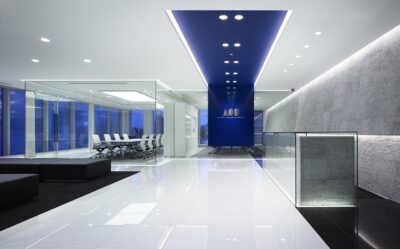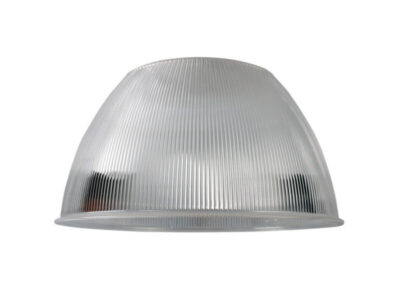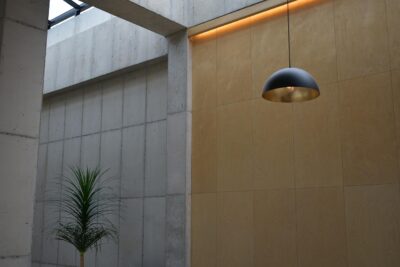
How to Use LED Fixture Covers for Green Building Compliance
How to Use LED Fixture Covers for Green Building Compliance By Aman | Updated on May 14th 2025 Green buildings are no longer a trend—they’re
Home » Benefits of LED Light Covers Over Traditional Fluorescent Covers
Lighting plays a pivotal role in both the aesthetics and functionality of any space. In recent years, LED lighting has surged in popularity due to its energy efficiency, longevity, and versatility. An essential aspect of LED lighting is the use of LED light covers, which not only enhance the aesthetic appeal but also improve the overall lighting experience.
In contrast, traditional fluorescent light covers have dominated for decades, but they come with limitations, particularly regarding efficiency and environmental impact. This article explores the many advantages of LED light covers compared to their fluorescent counterparts, and why switching to LED technology is a smart choice.
Over the past few decades, lighting technology has undergone significant changes. While incandescent and fluorescent lighting were once the norm, LED lighting (Light Emitting Diodes) has emerged as a superior option for both residential and commercial applications. LEDs offer numerous benefits, including reduced energy consumption, longer lifespan, and greater design flexibility. These advantages have made LEDs a go-to solution for modern lighting needs.
Fluorescent lighting, once praised for its energy efficiency compared to incandescent bulbs, is now being replaced by LED lighting solutions. This is due to the latter’s ability to offer even greater savings, versatility, and eco-friendly benefits. The addition of LED light covers further enhances these benefits, making LED lighting a far better option than traditional fluorescent solutions.
LED light covers are specialized covers designed to diffuse or direct the light emitted from LED bulbs or panels. They serve several functions, such as improving light quality, reducing glare, and protecting the LED fixtures. These covers are typically made from materials like acrylic, polycarbonate, or glass, and come in various shapes and sizes depending on the application, from LED panel covers to decorative fixtures.
One of the critical benefits of LED light covers is their ability to enhance the performance and aesthetics of LED lighting. By using covers, homeowners and businesses can better control the brightness, diffusion, and direction of light. Moreover, they add a layer of protection for the lighting fixtures, reducing wear and tear over time.
One of the standout advantages of LED light covers is their contribution to energy efficient lighting. LEDs themselves are already more efficient than traditional fluorescent bulbs, converting more electrical energy into light with minimal heat waste. When paired with the right light covers, LED systems become even more efficient by distributing light evenly and reducing the need for excessive lighting fixtures.
In comparison, fluorescent bulbs often suffer from inefficiencies, such as flickering and energy wastage due to heat generation. Fluorescents also require ballasts, which consume additional power. By transitioning from fluorescent to LED, users can reduce energy consumption by up to 70%, making LEDs the clear winner for long-term savings.
Another significant benefit of LED light covers is the durability and extended lifespan of the bulbs and fixtures they protect. LED lights can last up to 50,000 hours or more, which is considerably longer than the 10,000-hour lifespan of traditional fluorescent bulbs. This means fewer replacements and lower maintenance costs over time.
LED light covers play a crucial role in protecting these long-lasting bulbs from damage. Covers made from durable materials like polycarbonate or acrylic can withstand impact, vibrations, and wear, making them ideal for environments where durability is essential. Fluorescent covers, on the other hand, are often more prone to yellowing, cracking, and breaking, leading to more frequent replacements and higher costs.
From an environmental standpoint, LED light covers paired with LED bulbs are far superior to fluorescent lighting. Fluorescent bulbs contain harmful substances such as mercury, which poses a risk to both human health and the environment. Improper disposal of fluorescent bulbs can lead to mercury contamination in soil and water sources.
In contrast, LED lighting solutions are free from toxic materials and are 100% recyclable. By switching from fluorescent to LED, users reduce their carbon footprint and contribute to a more sustainable future. Additionally, the long lifespan of LEDs means fewer bulbs end up in landfills, further reducing environmental impact.
One of the unique advantages of LED light covers is their versatility in design. Unlike fluorescent fixtures, which are often bulky and limited in style, LED covers come in various shapes, sizes, and designs that can fit seamlessly into any decor. Whether it’s recessed lighting, LED panel covers, or decorative hanging fixtures, LED technology offers flexibility that suits both modern and traditional settings.
Furthermore, LED lights are much smaller than fluorescent tubes, allowing for more compact and creative lighting solutions. This opens the door for innovative architectural designs and smart lighting systems that can be integrated into homes and offices.
To truly understand the benefits of LED light covers, it’s important to compare LED vs fluorescent lighting directly across several key factors:
Installing LED light covers is relatively straightforward, and most homeowners or businesses can handle it with minimal effort. The key is to measure the light fixture accurately to ensure the cover fits snugly. Here’s a simple guide:
Maintenance of LED covers is minimal. Regular cleaning with a soft cloth and non-abrasive cleaner is usually enough to keep them looking new. Additionally, due to their durability, LED panel covers rarely need replacement, making them a low-maintenance option.
As LED technology continues to evolve, the future holds exciting innovations. One notable trend is the integration of smart lighting solutions, where LED lights can be controlled via smartphones or voice-activated assistants. Smart LED covers will play a role in these systems by helping to direct and diffuse light in various ways.
Moreover, advances in LED lighting solutions will likely include more energy-efficient designs, customizable light colors, and even more eco-friendly materials. As demand for sustainable lighting grows, the market will continue to see innovations that make LEDs an even more appealing choice for consumers.
The benefits of LED light covers over traditional fluorescent covers are clear. From greater energy efficiency to longer lifespan, reduced environmental impact, and design flexibility, LED lighting is the future of modern illumination.
By upgrading from fluorescent to LED, homeowners and businesses can enjoy better light quality, lower costs, and contribute to a more sustainable world. Fluorolite specializes in providing high-quality LED and fluorescent light cover replacements, offering durable solutions that enhance both the aesthetic and functional aspects of any space.
By switching to LED light covers, you can reduce energy consumption by up to 70%, leading to significant savings on electricity bills over time. Fluorolite offers energy-efficient solutions that ensure optimal performance while saving costs.
Yes, retrofitting is possible for most fluorescent fixtures. You can easily switch from fluorescent to LED by using compatible LED light covers and bulbs. It’s a cost-effective way to upgrade your lighting system without having to replace the entire fixture.
LED light covers are incredibly durable and can last for many years. Paired with long-lasting LED bulbs, they require minimal maintenance and rarely need replacement.
Yes, LED covers are made from recyclable materials and contribute to a lower carbon footprint compared to fluorescent covers. Fluorolite offers eco-friendly options for both residential and commercial settings, helping reduce environmental impact.

How to Use LED Fixture Covers for Green Building Compliance By Aman | Updated on May 14th 2025 Green buildings are no longer a trend—they’re

How to Extend the Life of Your LED Fixture Light Covers By Aman | Updated on May 3rd 2025 LED fixture light covers might seem

How to Clean LED Fixtures and Light Covers Safely By Aman | Updated on 30th April 2025 Let’s face it—LED lighting fixtures look sleek, save
Trustindex verifies that the original source of the review is Google. Muy bueno buen servicio buena calidadTrustindex verifies that the original source of the review is Google. I was trying to replace the fluorescent light coverings in my bathroom and I came across this Fluorolite Plastic LLC company online , which turned out to be a heaven sent experience. The customer service was amazing and not to mention the timely response to the email sent about what I needed . Customer service also took the time out to make sure that I was ordering the right product . My whole experience and the product was superb. Loving the light covering ♥️Trustindex verifies that the original source of the review is Google. The parts are great and the employees even better.Trustindex verifies that the original source of the review is Google. Great quality acrylic circles. Not flimsy like some I’ve tried. Material is protected from scratches and other damage well with plastic/paper coating then securely shipped from Fluorolite in thick cardboard. Encountered a shipping error with my order but in-house Customer Service resolved it quickly. Will definitely use Fluorolite again!Trustindex verifies that the original source of the review is Google. It was a very good experience. Customer service, excellent! The product was made with a thicker plastic. Not a cheap, thin one.Trustindex verifies that the original source of the review is Google. Product fit perfectly. Customer service was extremely helpful in working with my measurements and photo of existing light cover, to insure I purchased the right product.Trustindex verifies that the original source of the review is Google. light cover fits perfectly, good service, quick delivery
"We've Got You Covered" and Trace n'Fax are Registered Trademarks of Fluorolite Plastics, LLC. © 2011-2024 All rights reserved Fluorolite Plastics